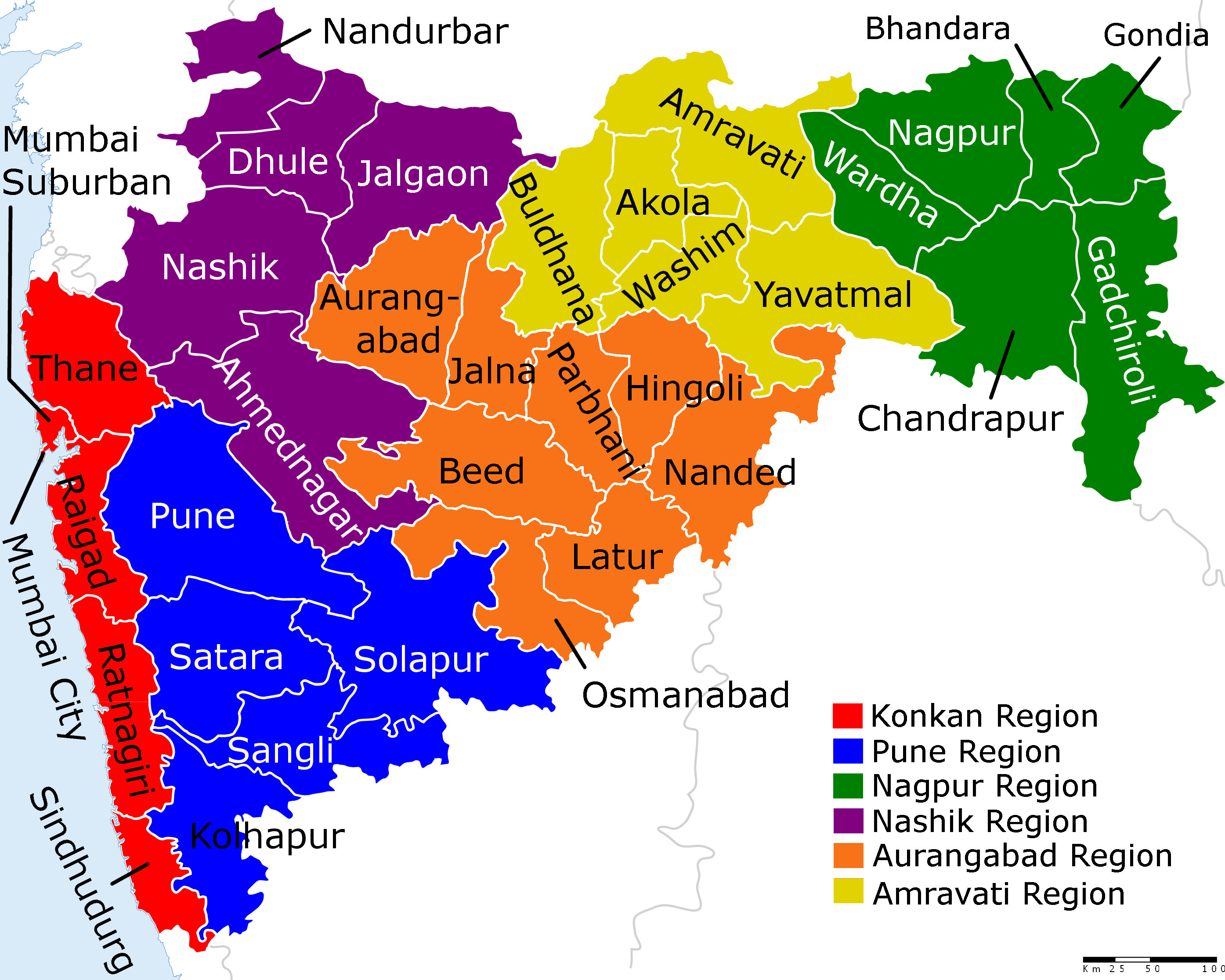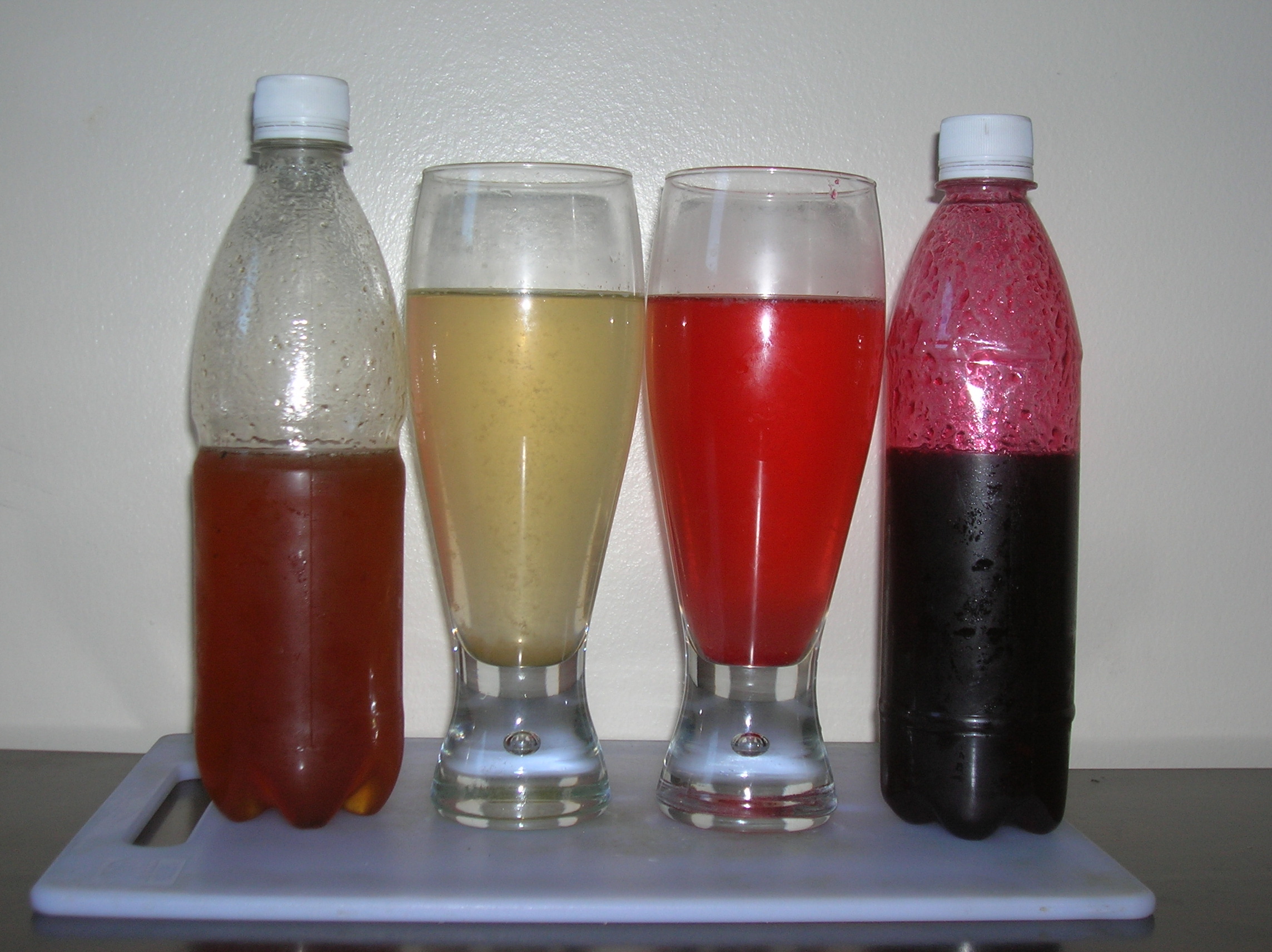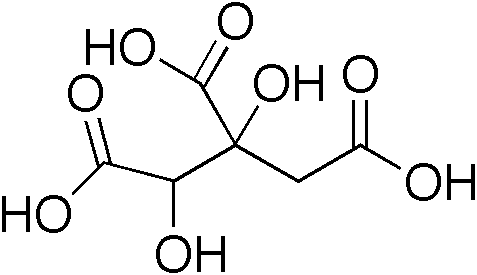|
Kokam (fruit)
''Garcinia indica'', a plant in the mangosteen family (Clusiaceae), commonly known as ''kokum'', is a fruit-bearing tree that has culinary, pharmaceutical, and industrial uses. It primarily grows in the Western Ghats, especially the Goa and Konkan region. Taxonomy The genus '' Garcinia'', belonging to the family Clusiaceae, includes about 200 species found in the Old World tropics, mostly in Asia and Africa. ''Garcinia indica'' is an evergreen, monoecious tree, which can grow up to 18 meters high, on maturity attaining a pyramid shape. The fruit, an orange-sized purple berry with fleshy endocarp, contains five to eight seeds, which account for 20–23% of the fruit's weight. The kernels account for 61 percent of the weight of the seed and about 44% of its oil. The seeds are compressed and embedded in an acidic pulp. Distribution ''Garcinia indica'' is indigenous to the tropical forest regions of India. Of the 35 species found in India, 17 are endemic. Of these, seven are ... [...More Info...] [...Related Items...] OR: [Wikipedia] [Google] [Baidu] |
Jacques Denys Choisy
Jacques Denys (Denis) Choisy (5 April 1799, Jussy – 26 November 1859, Geneva) was a Swiss Protestant clergyman and botanist. He studied theology, law, humanities and sciences at the ''Académie de Genéve''. In 1821 he became ordained as a minister, and during the following year, furthered his education in Paris. During his stay in Paris, he was accepted as a member of the ''Société d'histoire naturelle''. Following his return to Geneva in 1824, he was named chair of rational philosophy at the Academy, a position he maintained until 1847.Bulletin de la Société Botanique de France: publication mensuelle ..., Volume 7 by Société Botanique de France As a student in Geneva, he came under the influence of |
Maharashtrian Cuisine
Maharashtrian or Marathi cuisine is the cuisine of the Marathi people from the Indian state of Maharashtra. It has distinctive attributes, while sharing much with other Indian cuisines. Traditionally, Maharashtrians have considered their food to be more austere than others. Maharashtrian cuisine includes mild and spicy dishes. Wheat, rice, ''jowar'', ''bajri'', vegetables, lentils and fruit are dietary staples. Peanuts and cashews are often served with vegetables. Meat was traditionally used sparsely or only by the well off until recently, because of economic conditions and culture. The urban population in metropolitan cities of the state has been influenced by cuisine from other parts of India and abroad. For example, the South Indian dishes ''idli'' and ''dosa,'' as well as Chinese and Western dishes such as pizza, are quite popular in home cooking, and in restaurants. Distinctly Maharashtrian dishes include ''ukdiche modak'', , Kande pohe and Thalipeeth. Regular meals a ... [...More Info...] [...Related Items...] OR: [Wikipedia] [Google] [Baidu] |
Hydroxycitric Acid
Hydroxycitric acid (HCA) is a derivative of citric acid that is found in a variety of tropical plants including '' Garcinia cambogia'' and ''Hibiscus sabdariffa''. There are four isomers, (+)- and (-)-hydroxycitric acid, and (+)- and (-)-allo-hydroxycitric acid. The (-)-hydroxycitric acid isomer is the one found in ''Garcinia''. Chemistry Hydroxy citric acid as such cannot be isolated from garcinia fruits or hibiscus sabdariffa fruits. Hydroxy citric acid exist in both the open and lactone forms. The presence of two chiral centres in the molecule is exploited to construct molecular skeletons that are otherwise difficult to synthesize, thus demonstrating the lactones use as chirons. Biological effects (-)-HCA is a competitive inhibitor of ATP citrate lyase, which converts citrate into oxaloacetate and acetyl CoA. The reverse of this conversion is a step in the citric acid cycle. Laboratory and animal studies of HCA have produced results that indicate a potential for modulation ... [...More Info...] [...Related Items...] OR: [Wikipedia] [Google] [Baidu] |
Kokum Oil
''Garcinia indica'', a plant in the mangosteen family (Clusiaceae), commonly known as ''kokum'', is a fruit-bearing tree that has culinary, pharmaceutical, and industrial uses. It primarily grows in the Western Ghats, especially the Goa and Konkan region. Taxonomy The genus ''Garcinia'', belonging to the family Clusiaceae, includes about 200 species found in the Old World tropics, mostly in Asia and Africa. ''Garcinia indica'' is an evergreen, monoecious tree, which can grow up to 18 meters high, on maturity attaining a pyramid shape. The fruit, an orange-sized purple berry with fleshy endocarp, contains five to eight seeds, which account for 20–23% of the fruit's weight. The kernels account for 61 percent of the weight of the seed and about 44% of its oil. The seeds are compressed and embedded in an acidic pulp. Distribution ''Garcinia indica'' is indigenous to the tropical forest regions of India. Of the 35 species found in India, 17 are endemic. Of these, seven are endemic ... [...More Info...] [...Related Items...] OR: [Wikipedia] [Google] [Baidu] |
Coconut Milk
Coconut milk is an opaque, milky-white liquid extracted from the grated pulp of mature coconuts. The opacity and rich taste of coconut milk are due to its high oil content, most of which is saturated fat. Coconut milk is a traditional food ingredient used in Southeast Asia, Oceania, South Asia, and East Africa. It is also used for cooking in the Caribbean, tropical Latin America, and West Africa, where coconuts were introduced during the colonial era. Coconut milk is differentiated into subtypes based on fat content. They can be generalized into coconut cream (or thick coconut milk) with the highest amount of fat; coconut milk (or thin coconut milk) with a maximum of around 20% fat; and coconut skim milk with negligible amounts of fat. This terminology is not always followed in commercial coconut milk sold in western countries. Coconut milk can also be used to produce milk substitutes (differentiated as "coconut milk beverages"). These products are not the same as regular ... [...More Info...] [...Related Items...] OR: [Wikipedia] [Google] [Baidu] |
Solkadhi
Solkadhi is a type of drink, an appetizer originating from the Indian subcontinent, usually eaten with rice or sometimes drunk after or along with the meals. Popular in the coastal regions of Goa, southern Maharashtra and northern Karnataka, it is made from coconut milk and ''kokum'', ''aamsol'' or ''aamsul'', the dried fleshy skin of Garcinia indica ('ratambe' in Marathi) whose anthocyanin Anthocyanins (), also called anthocyans, are water-soluble vacuolar pigments that, depending on their pH, may appear red, purple, blue, or black. In 1835, the German pharmacist Ludwig Clamor Marquart gave the name Anthokyan to a chemical compo ... pigments provide a deep purple-pink colour. Preparation Solkadhi is prepared with liquid extract of fresh coconut known as coconut milk; however, nowadays you can also get this extracted milk in TetraPak. The coconut milk so obtained is usually mixed with agal or kokum, a little bit of salt, mustard seeds and/or chili-garlic paste is added ... [...More Info...] [...Related Items...] OR: [Wikipedia] [Google] [Baidu] |
Marathi Language
Marathi (; ''Marāṭhī'', ) is an Indo-Aryan languages, Indo-Aryan language predominantly spoken by Marathi people in the Indian state of Maharashtra. It is the official language of Maharashtra, and additional official language in the state of Goa. It is one of the 22 scheduled languages of India, with 83 million speakers as of 2011. Marathi ranks 11th in the List of languages by number of native speakers, list of languages with most native speakers in the world. Marathi has the List of languages by number of native speakers in India, third largest number of native speakers in India, after Hindi Language, Hindi and Bengali language, Bengali. The language has some of the oldest literature of all modern Indian languages. The major dialects of Marathi are Standard Marathi and the Varhadi dialect. Marathi distinguishes Clusivity, inclusive and exclusive forms of 'we' and possesses a three-way Grammatical gender, gender system, that features the neuter in addition to the masculine ... [...More Info...] [...Related Items...] OR: [Wikipedia] [Google] [Baidu] |
Konkani Language
Konkani () is an Indo-Aryan language spoken by the Konkani people, primarily in the Konkan region, along the western coast of India. It is one of the 22 scheduled languages mentioned in the Indian Constitution, and the official language of the Indian state of Goa. It is a minority language in Karnataka, Maharashtra, Kerala, Gujarat & Damaon, Diu & Silvassa. Konkani is a member of the Southern Indo-Aryan language group. It retains elements of Vedic structures and shows similarities with both Western and Eastern Indo-Aryan languages. The first Konkani inscription is dated 1187 A.D. There are many Konkani dialects spoken along and beyond the Konkan region, from Damaon in the north to Carwar in the south, most of which are only partially and mutually intelligible with one another due to a lack of linguistic contact and exchanges with the standard and principal forms of Konkani. It is also spoken by migrants outside of the Konkan proper; in Surat, Cochin, Mangalore, Ahmedabad, ... [...More Info...] [...Related Items...] OR: [Wikipedia] [Google] [Baidu] |
Squash (drink)
Squash (sometimes known as cordial in British English, dilute in Hiberno English, and diluting juice in Scottish English) is a non-alcoholic beverage with concentrated syrup used in beverage making. It is usually fruit-flavoured, made from fruit juice, water, and sugar or a sugar substitute. Modern squashes may also contain food colouring and additional flavouring. Some traditional squashes contain herbal extracts, most notably elderflower and ginger. Drinks Squash is mixed with a certain amount of water or carbonated water before drinking. The amount of water added is to taste, with the squash becoming less strong the more it is diluted. As a drink mixer, it may be combined with an alcoholic beverage to prepare a cocktail. Citrus fruits (particularly orange, lime and lemon) or a blend of fruits and berries are commonly used as the base of squash. Traditional squashes in Britain are usually flavoured with elderflower, orange, lemon, or blackcurrant. Raspberry and blackberr ... [...More Info...] [...Related Items...] OR: [Wikipedia] [Google] [Baidu] |
Garcinia Indica Syrup Making From Rinds
''Garcinia'' is a genus of flowering plants in the family Clusiaceae native to Asia, America, Australia, tropical and southern Africa, and Polynesia. The number of species is disputed; Plants of the World Online (POWO) recognise up to 400. Commonly, the plants in this genus are called saptrees, mangosteens (which may also refer specifically to ''Garcinia mangostana''), garcinias, or monkey fruit. Many species are threatened by habitat destruction, and at least one species, '' G. cadelliana'', from South Andaman Island, is almost or even completely extinct already. The fruits are a food source for several animals, such as the archduke butterflies (''Lexias'' spp.) of tropical eastern Asia which relish the sap of overripe mangosteens. The genus is named after French botanist Laurent Garcin (1683–1751). Description ''Garcinia'' species are evergreen trees and shrubs, dioecious and in several cases apomictic. The fruit is a berry with fleshy endocarp, which in several species is ... [...More Info...] [...Related Items...] OR: [Wikipedia] [Google] [Baidu] |
Tamarind
Tamarind (''Tamarindus indica'') is a Legume, leguminous tree bearing edible fruit that is probably indigenous to tropical Africa. The genus ''Tamarindus'' is monotypic taxon, monotypic, meaning that it contains only this species. It belongs to the family Fabaceae. The tamarind tree produces brown, pod-like fruits that contain a sweet, tangy pulp, which is used in cuisines around the world. The pulp is also used in traditional medicine and as a metal polish. The tree's wood can be used for woodworking and Tamarind#Tamarind seed oil and kernel powder, tamarind seed oil can be extracted from the seeds. Tamarind's tender young leaves are used in Indian cuisine, Indian and Filipino cuisine. Because tamarind has multiple uses, it is cultivated around the world in Tropical zone, tropical and Subtropics, subtropical zones. Description The tamarind is a long-lived, medium-growth tree, which attains a maximum crown (botany), crown height of . The crown has an irregular, vase-shaped ... [...More Info...] [...Related Items...] OR: [Wikipedia] [Google] [Baidu] |
Gujarat
Gujarat (, ) is a state along the western coast of India. Its coastline of about is the longest in the country, most of which lies on the Kathiawar peninsula. Gujarat is the fifth-largest Indian state by area, covering some ; and the ninth-most populous state, with a population of 60.4 million. It is bordered by Rajasthan to the northeast, Dadra and Nagar Haveli and Daman and Diu to the south, Maharashtra to the southeast, Madhya Pradesh to the east, and the Arabian Sea and the Pakistani province of Sindh to the west. Gujarat's capital city is Gandhinagar, while its largest city is Ahmedabad. The Gujaratis are indigenous to the state and their language, Gujarati, is the state's official language. The state encompasses 23 sites of the ancient Indus Valley civilisation (more than any other state). The most important sites are Lothal (the world's first dry dock), Dholavira (the fifth largest site), and Gola Dhoro (where 5 uncommon seals were found). Lothal i ... [...More Info...] [...Related Items...] OR: [Wikipedia] [Google] [Baidu] |


.jpg)




